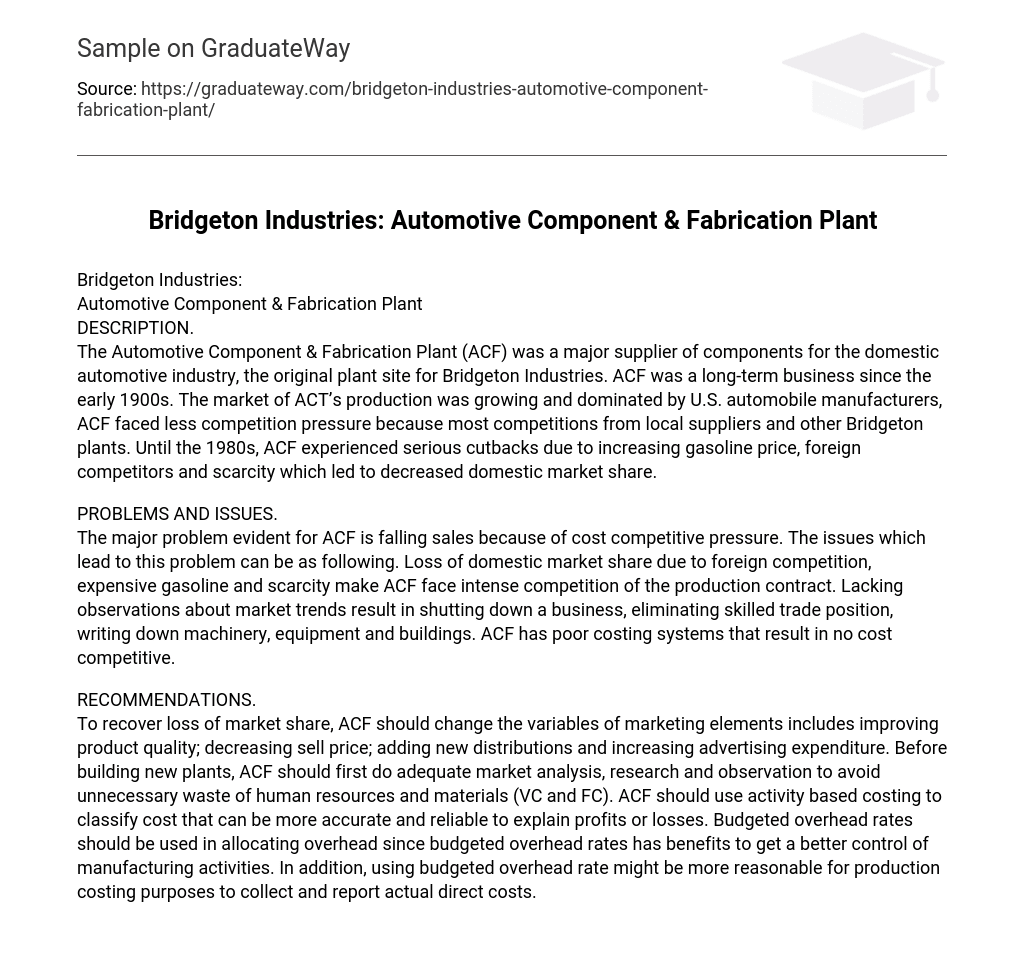DESCRIPTION
The Automotive Component & Fabrication Plant (ACF) was originally the main plant site for Bridgeton Industries and played a vital role as a supplier of components for the domestic automotive industry. ACF had been operating successfully since the early 1900s, benefiting from the dominance of U.S. automobile manufacturers in the market. In contrast to ACF, most competitors were either local suppliers or other plants owned by Bridgeton. However, during the 1980s, factors such as rising gasoline prices, competition from foreign companies, and scarcity led to significant cutbacks at ACF and a decrease in its market share within the country.
Problems and issues include:
ACF is currently facing a significant sales decline due to cost competition. This problem is influenced by several factors, including losing market share to foreign competitors, increasing gasoline prices, and scarcity issues. These factors have intensified the competition for production contracts. Moreover, ACF’s insufficient comprehension of market trends has resulted in business closures, layoffs in skilled trades, and the need to devalue machinery, equipment, and buildings. The inadequate costing systems at ACF contribute to its inability to effectively compete on cost.
RECOMMENDATIONS
To regain lost market share, ACF should modify the marketing variables which involve enhancing product quality, reducing selling price, expanding distribution channels, and increasing advertising expenditure. Prior to constructing new facilities, ACF should conduct sufficient market analysis, research, and observation to avoid wastage of human resources and materials (VC and FC).
ACF should utilize activity-based costing (ABC) to categorize costs for increased accuracy and dependability in explaining profits or losses. The allocation of overhead should employ budgeted overhead rates as it offers advantages in controlling manufacturing activities more effectively. Moreover, the use of budgeted overhead rates is more appropriate in production costing to gather and present actual direct costs.





